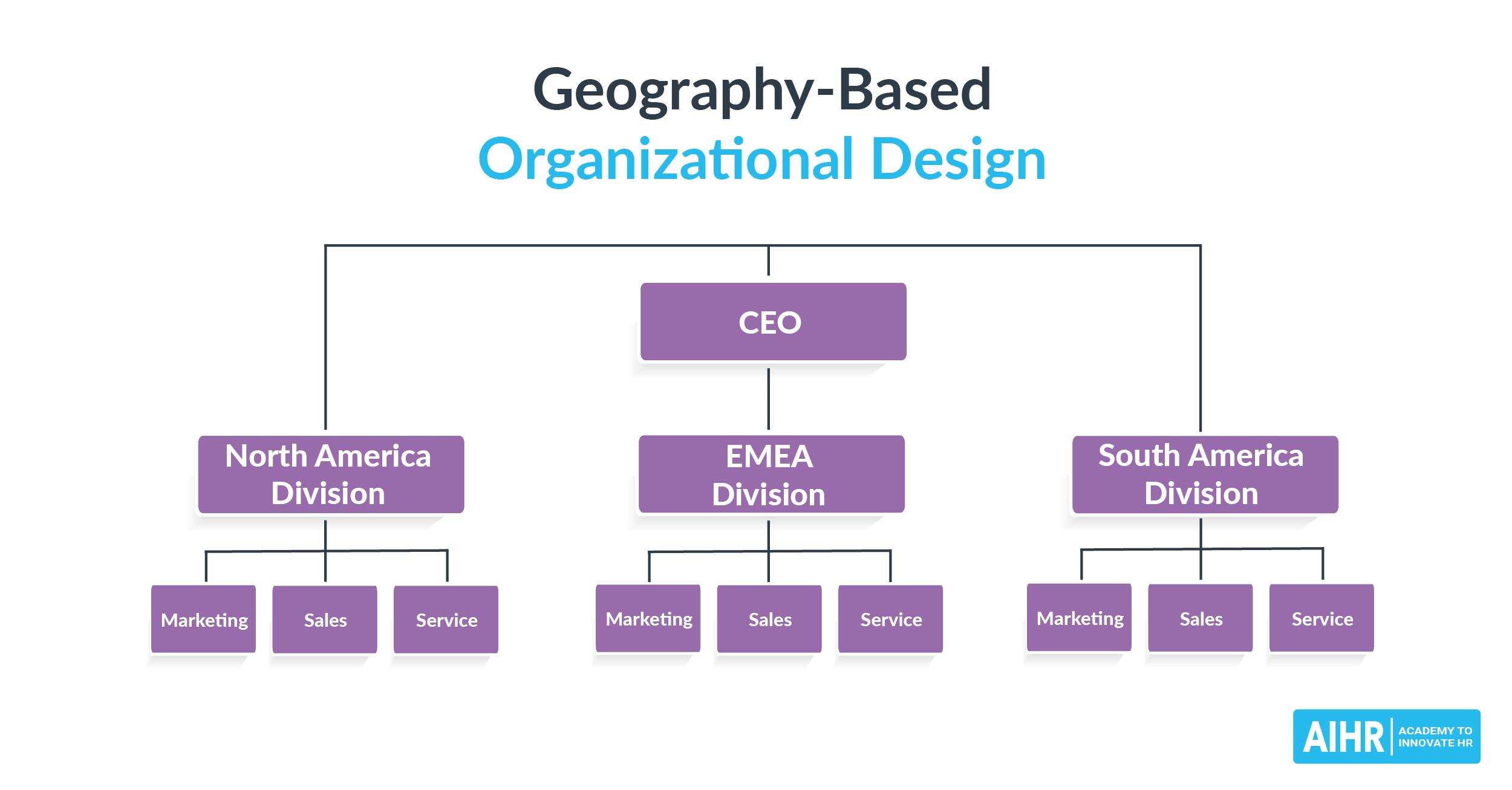Boundaryless Organization
What is a boundaryless organization in business?
A boundaryless organization is an organization that actively removes boundaries to innovation, meaning it has less hierarchy and functional separation and is more integrated. This allows for a free flow of information, ideas, and innovations.
A boundaryless organization reduces four types of boundaries. Reducing boundaries for each dimension is one of the key characteristics of a boundaryless organization.
The four types of boundaries are:
- Vertical. This is the traditional, hierarchical structure. Reducing management layers allows ideas to travel freely through the organization, and new initiatives can be implemented without managers stifling potential innovation. The aim here is to create a “healthy hierarchy”.
- Horizontal. This is the functional separation, including departments and other silos. By removing horizontal boundaries, ideas can easily be shared and implemented cross-functionally.
- External. This is separation within the value chain. By working closely with customers and suppliers, implementing innovations will be more effective.
- Geographical. This refers to the separation between countries or geographies and is a specific form of horizontal separation. By integrating different geographies, innovations will spread more easily and can be implemented faster.

Note here that boundaries are not eliminated. Rather, they are made porous. There is a clear separation between the own organization and a supplier, but by making the boundary porous, ideas can easily flow through.
Examples of boundaryless organizations
General Electric
Jack Welch, CEO of General Electric, pioneered the boundaryless organization in the 1990s. According to Welch, a successful organization is one in which the best ideas are discovered and exploited. Boundaries – whether between hierarchical levels, functions, geographies, or external boundaries – stifle this innovation.
According to GE’s 1994 annual report, “Boundaryless behavior has become the ‘right’ behavior at GE, and aligned with this behavior is a rewards system that recognizes the adapter or implementer of an idea as much as its originator. Creating this open, sharing climate magnifies the enormous and unique advantage of a multi-business GE, as our wide diversity of service and industrial businesses exchange an endless stream of new ideas and best practices”.
Jack Welch believed that rigid, hierarchical organizations did not have the right structure to foster innovation in a fast-moving and ever-changing world. To achieve this, Welch launched Work-Out, a program aimed at removing boundaries at the company.
W.L. Gore & Associates
W.L. Gore & Associates is a privately held American multinational company, best known for its Gore-Tex fabrics, a waterproof, breathable fabric membrane used in products such as outdoor clothing and footwear. The company is distinctive for its organizational structure, which is famously non-hierarchical and lattice-like rather than traditional.
The company operates with a “flat” organizational structure where teams form organically around projects or initiatives. This structure is designed to foster innovation, quick decision-making, and a high level of employee engagement.
Valve Corporation
Valve Corporation, a renowned video game developer and digital distribution company, has a unique corporate structure with a flat management approach. At Valve, employees have the freedom to choose their own projects and form teams organically, which creates an environment of direct communication and collaboration, creativity, and innovation.
The company can adapt quickly to changes in technology and market demand and thus maintain its edge in the competitive gaming industry.
Characteristics of a boundaryless organization
Boundaryless organizations:
- Eliminate traditional organizational boundaries, which removes obstacles to innovation and promotes the generation and implementation of new ideas. Without these boundaries, ideas can travel through the organization with little hindrance.
- Have more agility, flexibility, and a higher degree of integration. This means that the organization can better marshall resources into new products and services. The result is more problem-solving and innovation potential, allowing for rapid response to new opportunities or challenges.
- Utilize cross-functional teams that cut across traditional departmental lines, facilitating a multidisciplinary approach to projects and initiatives.
- Empower individuals at all levels to make decisions and take action based on their expertise and insights, which further boosts the organization’s adaptability and innovative capacity.
- Establish direct and open lines of communication throughout the organization, ensuring that information flows freely without hierarchical barriers.
Boundaryless organization advantages and disadvantages
Advantages
The advantages of a boundaryless organizational structure for the organization are increased performance, agility, flexibility, and innovation potential.
Advantages of a boundaryless organization for the employee include:
- Increased autonomy
- Increased engagement, and
- Higher job satisfaction.
Disadvantages
The main disadvantage of a boundaryless organization is the difficulty of implementing it in certain industries. Some industries, like the biochemical industry, are highly regulated and require standardized processes that don’t always allow for highly permeated boundaries.
Additionally, a boundaryless organization may not work for all employees. Some employees prefer structure over freedom, and operating in an environment with fewer boundaries may not be easy for them.
Creating the boundaryless organization
Creating a boundaryless organization is a balancing act. Finding the balance between highly permeated boundaries (which will reduce standardization and performance) and having too many boundaries (which will stifle innovation) will be difficult. Balancing both will be an ongoing challenge.
However, when done well, the boundaryless organization allows for higher flexibility, speed, and innovation without compromising current activities and processes.
Here is what the implementation could look like in practice:

FAQ
Boundaryless organizations offer improved performance, agility, flexibility, and innovation potential, alongside benefits for employees such as increased autonomy, engagement, and job satisfaction. However, their implementation can be challenging in highly regulated industries requiring standardized processes. Moreover, the lack of structure may not suit all employees, who may prefer more defined boundaries and roles.
Companies like W.L. Gore & Associates and Valve Corporation are known for utilizing a boundaryless organizational structure, promoting flexibility, employee autonomy, and a high degree of innovation by minimizing traditional hierarchical barriers. These firms emphasize direct communication, collaboration, and a flat management approach to drive creativity and rapid decision-making.







